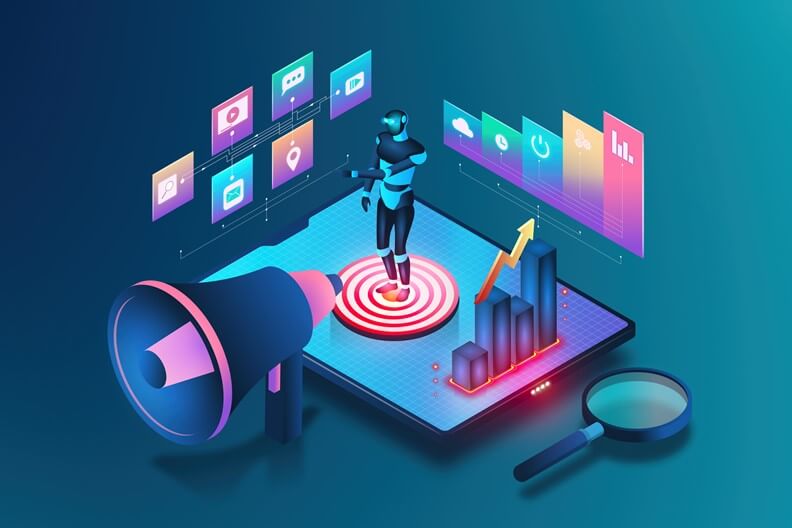More and more businesses are turning to artificial intelligence to increase efficiency and accelerate workflows — and yes, that includes sales. This may seem counterintuitive at first. After all, sales has traditionally been one of the most human-centered functions in any organization. But the integration of AI into sales isn’t just possible; it’s happening — and, in many cases, delivering results.
From personalized email campaigns to AI-driven lead scoring, the tools now available allow companies to analyze massive volumes of data, track buyer behavior, and respond with tailored messages at scale. But with these advancements come new challenges that companies must navigate to truly reap the benefits.
Understanding the Fit Between AI and Sales
One of the biggest hurdles is the assumption that AI either replaces or disrupts traditional sales models. In practice, it complements them — when used thoughtfully.
Take, for example, Adam Lyons, founder of upsells.com. He began building AI sales teams for businesses after noticing entrepreneurs outsourcing creativity to AI tools while avoiding sales altogether. Lyons argues that AI is particularly well-suited to repetitive and emotionally laborious sales tasks, such as cold calling or lead follow-ups. “An AI doesn’t get bored. It doesn’t take things personally. It just keeps going,” he says.
Still, not everything can be handed over to machines. The fine-tuned social cues, emotional intelligence, and nuanced improvisation of a skilled human salesperson aren’t easily mimicked — at least not yet. But AI can offer consistency and scalability that few humans can match.
Customization: A Critical Step Often Overlooked
One of the most common challenges in implementing AI in sales lies in customization. Off-the-shelf solutions often fall short. Alex Smith, co-owner of Render3DQuick.com, learned this the hard way. “Our service is highly individualized,” he says. “AI-generated emails initially felt generic and missed important details.”
To address this, his team worked closely with developers to tailor the system to their industry, their project workflows, and their tone. That investment paid off — not by removing humans from the process, but by allowing the AI to take over repetitive administrative work, freeing the sales team to focus on building client relationships.
Another key piece of the puzzle is internal trust. Smith had to show his team that AI was a support system, not a threat. By demonstrating how AI could simplify time-consuming tasks — such as scheduling calls or sending follow-ups — he saw adoption improve.

Image source: Gavel
Preserving the Brand Voice
Another pain point is authenticity. Sam Hoyle, a chartered accountant at Harmony Accounting, uses AI to support her sales content strategy. For her, the issue was never productivity — it was tone. “My brand voice is warm, jargon-free, and human. AI often misses that on the first try,” she says.
Her solution? Treat AI as a starting point. Hoyle uses AI to generate drafts, which she then edits to ensure they reflect her unique style and values. It’s a time-saver, yes, but only when paired with human review.
The Technical and Financial Hurdles
Beyond content and communication, integration is often where AI projects lose momentum. Many sales platforms were never designed to work with AI. Josh Pigford, founder of Maybe Finance, describes this as a “logistical nightmare.” His recommendation is to start small — focus on one bottleneck, like lead scoring or email personalization, and build from there.
And then there’s the question of cost. For startups and smaller firms, AI can feel out of reach. Between tool subscriptions, developer time, and training, the investment adds up. Open-source platforms and modular tools can ease the burden, but the trade-off is a longer ramp-up time and steeper learning curve.
Looking Ahead
Perhaps the most futuristic development in AI sales is voice-based agents. Berlin startup Solda.AI claims their autonomous agents are closing real deals over the phone — and doing so with a 1% detection rate. Whether this level of automation becomes the norm remains to be seen, but it highlights a broader point: AI isn’t confined to background analytics anymore. It’s entering the frontline of customer interaction.
Still, the companies seeing the most success are those using AI not as a replacement for people but as an enhancer of human effort. The goal isn’t to remove the human element from sales, but to make it more impactful by offloading the work that machines can do better.
AI in sales is not plug-and-play. It’s a strategic commitment that requires ongoing calibration. But for those willing to tackle the challenges — from integration and customization to cost and team buy-in — the payoff can be meaningful: more efficient processes, better-targeted messaging, and ultimately, stronger customer relationships.
Sources: Forbes, Economics Observatory
